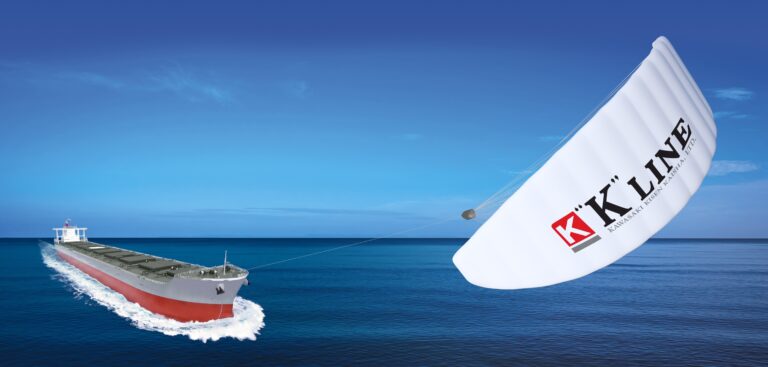International shipping company Kawasaki Kisen Kaisha (K Line) has ordered three further Seawing systems from manufacturer Airseas. The recent order means five of the company’s vessels will now utilize the wind propulsion technology to reduce emissions.
Once delivered to K Line the sustainable solutions will be installed on three Post-Panamax bulkers, after the first two systems are fitted to two Capesize bulkers toward the latter part of 2022. The Seawing systems consist of parafoils which fly around 300m above the sea to harness wind power to aid in vessel propulsion. This enables main engine load to be reduced and an expected average fuel and emissions saving of 20%.
The systems will utilize digital twins and advanced automation systems to ensure the Seawing systems are safely deployed, operated and stored with minimal interaction needed from the ship’s crew. In addition to the orders, Airseas and K Line have signed a technology development agreement which will see the duo integrating Seawing and K Lines’ vessel data platform – Kawasaki Integrated Maritime Solutions – to maximize system performance.
At present, Airseas has a 20-year agreement with K Line, with the option for the Seawing system to be installed on up to 50 of the shipping company’s vessels.
“We have adopted an ambitious net zero GHG emissions target by 2050, deploying technologies such as wind propulsion which is a key component of our strategy,” said Michitomo Iwashita, managing executive officer, K Line. “We are proud to be partnering with Airseas, a leader in the wind propulsion field, that has done so much to bring the technology into the next generation via the development of Seawing. We look forward to seeing it deployed on our fleets in the coming years.”
“K Line recognizes that ships being built now will need to meet the decarbonization standards of the 2040s and 2050s, as regulators and customers step up pressure for the industry to decarbonize,” said Vincent Bernatets, co-founder and CEO, Airseas. “Wind propulsion systems like the Seawing help lay the long-term foundations for the sustainable shipping of the future by reducing emissions right now, in addition to delivering a strong return on investment in the short term via fuel savings.”



